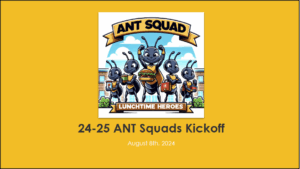Dear Together Friends, Fans, and Family,

This summer has found me traveling over the Chesapeake Bay Bridge a total of maybe 10 times. For those that do not know, the Bay Bridge is a spectacular (and a bit scary) drive due to its sharp curve and lack of shoulders, its stunning panoramic views of the Bay, and just how much vehicle volume it moves across Maryland. Because I’ve driven over it at 4:30 AM (various triathlons), 9 PM (daughter’s birthday trip to the beach), 12 PM (sleepaway camp pick up) and other times of day, plus weekdays and weekends, I’ve gotten to see it in several different iterations these past few months.

The Bay Bridge in all its (terrifying?) splendor.
What I’ve been most struck by during my many drives is the dynamic lane shifting and traffic flow. Last weekend, one of the spans was switched to two-way traffic, thus allowing there to be three lanes headed to the Eastern Shore, and just two lanes returning to the DC area. I went down a bit of a rabbit hole to understand the placement of cones, the scary-looking red flashing barricades to indicate a lane reversal, and how and why these decisions are made. I learned this: “This pattern is adjusted during incidents or peak travel times: for instance, on the outset of weekends when there is a high volume of beach-bound traffic, one lane on the westbound span is configured for eastbound traffic.”
What I took away from my research – and from my lived experience! – is that there are plans in place for known congestion periods (beach traffic on weekends) and also unpredictable incidents (vehicle accidents, high winds). I am here to encourage us to consider our calendars in a similar fashion. See, you knew I would circle back to Togetherness eventually.
As you think about your calendar for the upcoming academic year, it can be easy to fall into the Recurring Meeting Trap. It feels GOOD to set your meetings for the year and know that they are slotted in consistently. But, then our calendars cannot be the dynamic tools we need them to be. So, what can we do instead to straddle the balance of systems needed, but spontaneity required?
- Consider certain times of year your calendar can get predictably congested. Think about the first day of school, testing time, board meeting preparation, and so on. Have a known plan for those time periods, e.g. all internal meetings get cancelled or shortened. By doing this well in advance, you don’t have to scramble last minute. Go do this right now!
- Know what you can do to buffer when things go off the rails, so to speak. This is like an accident on the Bay Bridge. Traffic is halted, police escorts close a lane, and lanes get reversed. When my kids were younger, I used to ask myself each evening, what will my plan be if someone is home sick tomorrow? I would know which meetings and classes I must honor, which I could move, and where I could ask for help.
- Be okay with reversing traffic now and again. This may be a bridge too far (hahaha, see what I did there), but I always encourage our class participants to take some time to check for any priority changes and alter their standing meetings accordingly. For example, maybe some student data requires a shift in the observation schedule, or some fundraising is behind schedule. You may want to pause, assess the traffic situation, and make some changes.
In the meantime, if you need me in August, I’ll be moving in my eldest bonus child to her first year at Mt. Holyoke and getting the three other Semi-Together Teens off to 7th, 8th and 10th grades, spying on volleyball tryouts, celebrating my 48th birthday, and figuring out if I need a new fanny pack (I’ve had my current pack for 10+ years). Oh, and over on LinkedIn, there is a Together Treasure Trove of good comments about packing for a Together Training (adds Tide Pens to bag!).
#togetherforever #clipboardsandclogs
Maia
PS If you enjoyed this month’s Together Tips, please forward to a friend or colleague (or three) and encourage them to sign up to receive it in their own inbox each month! We are at 30,000+ subscribers and counting, and people frequently cite it as a fun and helpful read each month.

- Do you have a Together Family? The folks at Slate tell us how they keep their kids, their partners, and themselves Together. They offer a toolbox for you to find what works for you (especially for those of us trying to figure out how to make sure homework gets done), similar to Together Group paper, digital, and what-er and when-er Thanks for sharing, Emily! For other Together Family ideas, check here, here, and here.
- Apparently, punctuation can be hostile. We’re big proponents of intentionality in communication (I may have mentioned my love of a strong communication agreement in a workplace), and now there’s another consideration to add to the mix: Does your punctuation match the tone you want to convey? Researchers are here to tell us when that period might offend. (And here I thought it was just the correct way to end a sentence!?…) What does your ellipsis mean?
- Every kid deserves a Baller Summer. I always love Tim Daly’s essays, but this one really hit home for me. As a huge proponent of youth development in all forms (I didn’t lead a Girl Scout troop for a decade for nothing!), I would personally like to see more organizations invest in great summers for ALL kids. Kansas, what a win!


